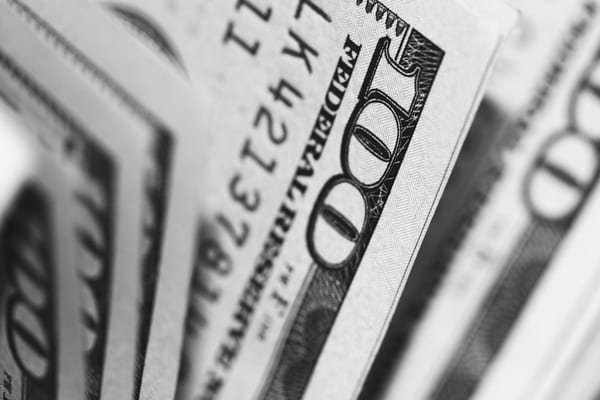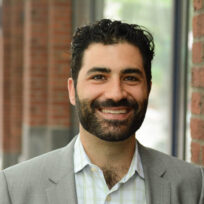Master Your Cash Flow to Unlock True Financial Freedom
If there is one financial planning issue that spans generations and income tax brackets, it is cash management. Whether you make $30,000 a year or $300,000, knowing exactly where that money goes each month is a challenge. Those who master cash flow are in a much stronger position to have long-term financial success.
Those with cash flow under control are also better positioned to weather periods of uncertainty. They know where they can cut back if income drops unexpectedly or if large medical expenses crop up out of the blue.
If you want to sort out your cash flow, there are two areas you will need to conquer: knowing your number and creating a system to direct cash to the right places.
There are many ways to manage this process. There are apps—both free and paid—that download transactions from your credit cards and checking account to help you categorize expenses. You can also build your own spreadsheet, but that route comes with more upkeep.
The key is to find a system that works for you. I will offer up an idea here of how you can approach this, and I encourage you to use it as a guide rather than a prescription.
Know Your Number
So, what is your “number”? This refers to the total amount that you plan to spend over a year. It comes in many forms, and it is important to think about it accordingly. If you’ve ever been put on the spot—or put yourself on the spot—you know that this is a daunting number to quantify. It is helpful to break it down.
First, consider your fixed, non-discretionary expenses. These are relatively easy to find if you comb through a few months of credit card and bank account statements. Non-discretionary items include rent or mortgage, utilities, cell phone bills, cable and internet, and memberships and other subscriptions. They are expenses that are known and recurring. They may fluctuate—like a gas bill that goes down in the summer and up in the winter—but they are going to be there month in and month out, and you should be able to quantify them pretty quickly.
Then, consider your fluctuating non-discretionary expenses. These typically include food, household items like cleaning supplies and toilet paper, home maintenance, and a basic level of clothing and personal care. These expenses will fluctuate week to week and month to month, but they are an ongoing part of your expenses and should be considered as such. What do you average month to month? That is a good place to start.
Finally, we have the broad category of discretionary expenses. These are the wants, not the needs. Things like eating out, going to shows and concerts, going above and beyond the basics for clothing and personal care, home renovations, and travel are some that come to mind. These may be ongoing, like eating out a few times a week, or much less frequent, like a big home improvement project once every few years or travel that comes in the form of one or two trips per year.
Before you consider your discretionary wants, it is helpful to work through a broader financial plan. Knowing what you will need to save to meet your long-term goals will help you not only target a discretionary expense figure, it will also give you the freedom and confidence to spend on those discretionary items without worry.
As you can see, your “number” is a series of numbers that fit into a larger plan. Together, the numbers allow you to live your richer life today and prudently plan for your richer life tomorrow. It is a balancing act, and one that, if done well, can instill a sense of peace around spending money.
Direct Cash to the Right Places
But having a number is only half the battle; now you must stick to it. Creating a system to manage cash flow is perhaps the most crucial part of putting a financial plan into action. It will provide you with the structure to not only keep a handle on what you spend but also maximize what you can save and invest—putting you in a position to reap the rewards of compound growth over time.
The key is to create a paycheck for yourself, paying yourself precisely what you need to meet your needs. This is going to mean creating some money buckets. But the first step, before thinking about the spending buckets, is to direct all of your income—100 percent of all salaries, bonuses, stock proceeds, etc.—into a non-spending account. This might be a savings account or an investment account. Once you have your deposit account set up, you can direct transfers out to the different buckets.
First, you will need a day-to-day spending account, or you might think of it as a primary checking account. Set up a regular transfer from your deposit account to cover your expected monthly expenses. You’ll know pretty quickly if you are sticking to your number. You’ll either have cash left at the end of the month or you won’t, and you’ll have to pull over additional funds from the deposit account.
Second, think about your discretionary expenses and how you want to break them up.
Some people like to have a separate account for ongoing discretionary expenses like dining out, clothes, or electronics. You can fund an account like this with a monthly deposit and use a debit card for these expenses.
Then, for one-off expenses like travel or home improvements, you can fund a separate account and make on-demand transfers to your day-to-day spending account when expenses come up. Book a plane ticket to London—transfer that amount into your day-to-day spending account to cover the charge. This account can be funded monthly at a level that gets to your annual target. You can gauge what you can “afford” by what is available in this account.
I have found for myself and many clients that physically separating funds into different accounts can make a big difference. Opening your banking app and putting through a transfer forces you to consider how it fits into your overall plan.
At the end of the day, it is not about restriction—it is about freedom. The freedom to create a plan, prioritize and make choices, and have the tools in place to stick to it.
Read more from our blog:



